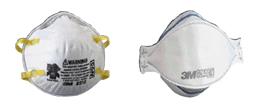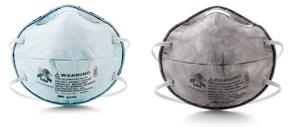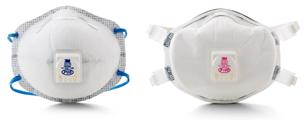Don’t forget to shave you and use your mask.
Before resorting to personal respiratory protection, it is important to ensure that all other means have been considered to eliminate worker exposure at the source. For example, better ventilation, change in process or work material, confined space redesign (if applicable), source removal of contaminants (e.g. change in work schedule).
Unfortunately, it may be necessary to use respiratory protective devices. It is therefore necessary to implement the measures and activities provided for in CSA standard Z94.4-11 “Selection, Use and Care of Respirators” and to eliminate at source the hazards to the health, safety and physical integrity of the employee and to ensure respiratory protection of workers assigned to such work.
Wishing to improve working conditions and limit the human and economic consequences of accidents, we must reconcile the layout of workplaces, work organization, equipment and materials with the protection and safeguarding of the occupational health and safety of its employees.
In which environments do you have to operate? Is it an IDVS (Immediate Danger to Life and Health) environment? When the following conditions arise, we must ensure that our workers wear the right equipment:
A known contaminant at or above a DIVS (IDLH) concentration;
A known contaminant at an unknown, but potentially toxic concentration;
An unknown contaminant;
Insufficient oxygen;
Confined space;
A contaminant concentration equal to or greater than the Lower Explosive Limit;
Firefighting conditions.
It should always be remembered that all of these contaminants can take any form: solid, liquid or gaseous.
Therefore, we must first carry out product identification and at the same time establish the appropriate respirators for each repetitive work we have to perform at our customers’ premises or in our plants.
The following elements must be answered first of all:
1) The places where the work is carried out;
2) The nature of the work performed in the department;
3) The duration of the exposure;
4) The type of product, its IDVS concentration limit;
5) The type of respiratory equipment workers must wear to perform the work:
5.1 Half-mask cartridge filtering equipment;
5.2 Full-face mask cartridge filtering equipment;
5.3 Self-contained breathing apparatus;
5.4 Airlines breathing equipment.
In general, and to simplify understanding, we will take a simple case as an example. In the case of a person who wants to carry out renovation work on his house. Using the above-mentioned precepts as a guide. What is the contaminant(s)? Here is the set of works and their possible contaminants. What is the year of construction of the house, before 1995 or earlier?
You may be wondering about the relevance of this question? The answer refers to the year of the end of the use of asbestos in building materials. In this regard, it is important to note that all materials containing more than 0.1% have been banned.
Let us get back to the matter at hand. If your home was built before 1995, chances are that some materials contain asbestos. Here is a non-exhaustive list of materials that may contain asbestos.
Vermiculite.
– Small vinyl tiles.
– Flaky, stucco-like ceiling.
– Plaster joints.
– Refractory materials, concrete blocks for the fireplace.
– Asbestos slab near the fireplace or furnace.
– Insulation jacket for old hot-water heating ducts.
At this stage, we recommend that you take a sample for analysis. Put the sample inside a Zip lock freezer bag (double zipper bag). For added assurance, take a second bag. Send the sample to the analytical laboratory of your choice. If it can help you, we recommend Air test, they have several points of service in the Montreal area.
If the analysis report confirms, the presence of asbestos was 0.1%. Unfortunately, you must have the asbestos decontaminated before you do your renovation work. A more in-depth analysis of your risk must be done. We recommend that you consult experts. You can also visit our website at abestosmontreal.ca to learn more about the equipment required for decontamination.
In the event that your work does not involve asbestos. You can determine what kind of contaminant you will be in contact with.
Is it dust or fumes?
Take for example, dust generated by cutting lumber (spruce), cutting gypsum board and applying gypsum putty commonly called joint cement (sandblasting).
In an ideal world, how can we deal with this problem?
If you are a worker working in Quebec, the regulations of the LSST apply and organizations such as CNESST are responsible for the proper implementation of your work. Of course, if you are doing it in a personal capacity, you are not governed by these regulations, but nothing should prevent you from respecting the exposure limits. Because after all the exposure limits, it’s good for everyone. In many cases, the use of respiratory protection is very affordable in terms of price. As the saying goes, it’s not worth the money.
Occupational hygienists have established protocols and procedures to provide maximum protection for workers.
Most often, poisoning is caused by repeated exposures over many years. The human body can eliminate a number of toxins, however, there is a limit beyond which chronic illness occurs.
Here is a summary of the terms used by occupational health specialists.
DIVS (IDLH): Immediate danger to life or health; some products become lethal at a certain concentration. Value in ppm or mg/m3.
TWA (TWA): Weighted limit value based on an 8-hour shift. This limit is influenced by the time of exposure and the presence of other contaminants that have the same effects on humans. That is, a worker working a 12-hour shift (8 + 4) should lower the exposure limit. Similarly, if the air is contaminated with several contaminants that cause identical adverse effects, their adverse effects are increased accordingly. The limits of individual products no longer apply in this case.
VECD (STEL) Short-term limit value, limit in ppm or mg/m3 over a period of 15 minutes. This limit is used, for example, during demolition work or when the maximum amount of dust has been removed. For example, emptying bags of dusty products.
Another consideration is the % of oxygen. It should not fall below 19.5%, it is normally 20.5%.
Environmental considerations.
Since this is an example of home renovation, where the worker is cutting wood and gypsum, let’s say that with good ventilation or if the wood cutting is done outdoors, exposure should be reduced. If, on the other hand, the worker generates dust in a confined space such as a containment building, the dust concentration will obviously increase due to the lack of ventilation.
You can use orange containment fabric, SACCT2 and Zip Wall studs to secure your enclosure. You can also add an air purifier that filters the air and prevents dust from dissipating throughout the house.
Another consideration:
If you ever have to do any work in the attic. Try to provide fans to bring in plenty of fresh air. Attics are technically enclosed spaces, since they are not closed areas intended for human occupancy. Lack of fresh air can cause discomfort.
– What respiratory protection does the market offer? Respiratory protection equipment manufacturers offer various personal protective equipment. These are related to the protection factor required for the contaminants present and the task to be performed. Obviously, the premise is that it is impossible to eliminate the risk completely at the source.
The masks themselves of the elements that you put in your mouth and nose that are not approved as is. The best example is the pieces of tissue put over the mouth and nose attached with rubber bands. The main function of these devices is to protect others from aerosol spray from the wearer. This type of product can be found in the medical and dental fields. It is often the type of mask that Asians wear when they are in contact with other people when they have the flu. This type of product does not have any protection factor, because it is not airtight enough. The filtration of external contaminants into the respiratory system is too basic and not effective enough.
This type of Personal Protective Equipment (PPE) is widely used by Mr. and Mrs. Sometimes it’s the right choice, sometimes it’s the wrong product.
This type of respiratory protection is not effective against gases and vapors. Except for a few models containing activated carbon. And that’s for very low concentrations. Respirators are designed for harmful concentrations.
Back to the protection factor, the protection factor assigned to a respirator is 10. A protection factor of 10 indicates that it protects up to 10 times the concentration limit established by the government agencies having jurisdiction. This is under the best conditions of waterproof use.
IMPORTANT TO NOTE MEN MUST BE FINELY SHAVED OR THE RESPIRATOR IS NOT CONSIDERED EFFECTIVE.
Respirators come in a variety of shapes and thicknesses depending on the type of respirator required. Some have exhalation valves. These valves are especially useful in hot and humid weather. Comfort is improved and fogging in safety glasses are greatly reduced. Negative pressure equipment with the same sealing constraints. Types N, R, P and efficiency rates of 95% and 100%.
In 1984, respirator manufacturers began to offer different types of products. The first of these was based on resistance to oily particles.
The 95% and 100%
The 95 % applied after characteristic N, E or P indicates the filter efficiency level in %. A filter with an efficiency index of 95 % filters out particles as small as 0,3 um.
The 100 % applied after the N, R or P indicates a filtration level of 99,97 % for particles as small as 0,3 um.
2) Type N.
This type of respirator is used for dusts and aerosols that do not contain oil. This classification was necessary because of the degradation caused by no oil on the filter membranes of the respirators.
With these types of filter membranes have little constituted respirators with efficiency factors of 95% or 100% (99,997%). Some respirators are equipped with exhalation valves. As an example:

N95: R8210
N95: R9210
3) Type R
The type of filter membrane indicates that the respirator is resistant to dust and oil-containing aerosols for a period of 24 hours. Beyond this period of time, the filter membrane is too degraded by the oil to be used.
Once again, manufacturers offer a selection of respirators with different percentages of efficiency and with the possibility of having an exhalation valve. As an example:

R95: R8246
R95: R8247
4) Type P
The respirator type is manufactured with a filter membrane that is unaffected by oily particles. It is obviously more expensive than the other two and they are available in percentage efficiency. As an example

P95: R8576
P100: R8293
Summary on disposable respirators.
The protection factor established by the manufacturer is 10. The hygienists use a lower protection factor of 5 because of the difficulty of users to maintain maximum sealing conditions.
These disposable respirators and others are available at Sylprotec. You can buy them online or at their store in Saint-Leonard. You’ll also find a wide selection of safety equipment, fire protection materials and more.
Sylvain Patrice f.p.t.
By the same author:
Safety glasses for the workers.
Hearing protection for workers.
Emergency lighting the principles of operation.
Signage in an industrial environment.
Posters in industrial settings in Canada.
The safety helmet is an indispensable piece of protective equipment.
